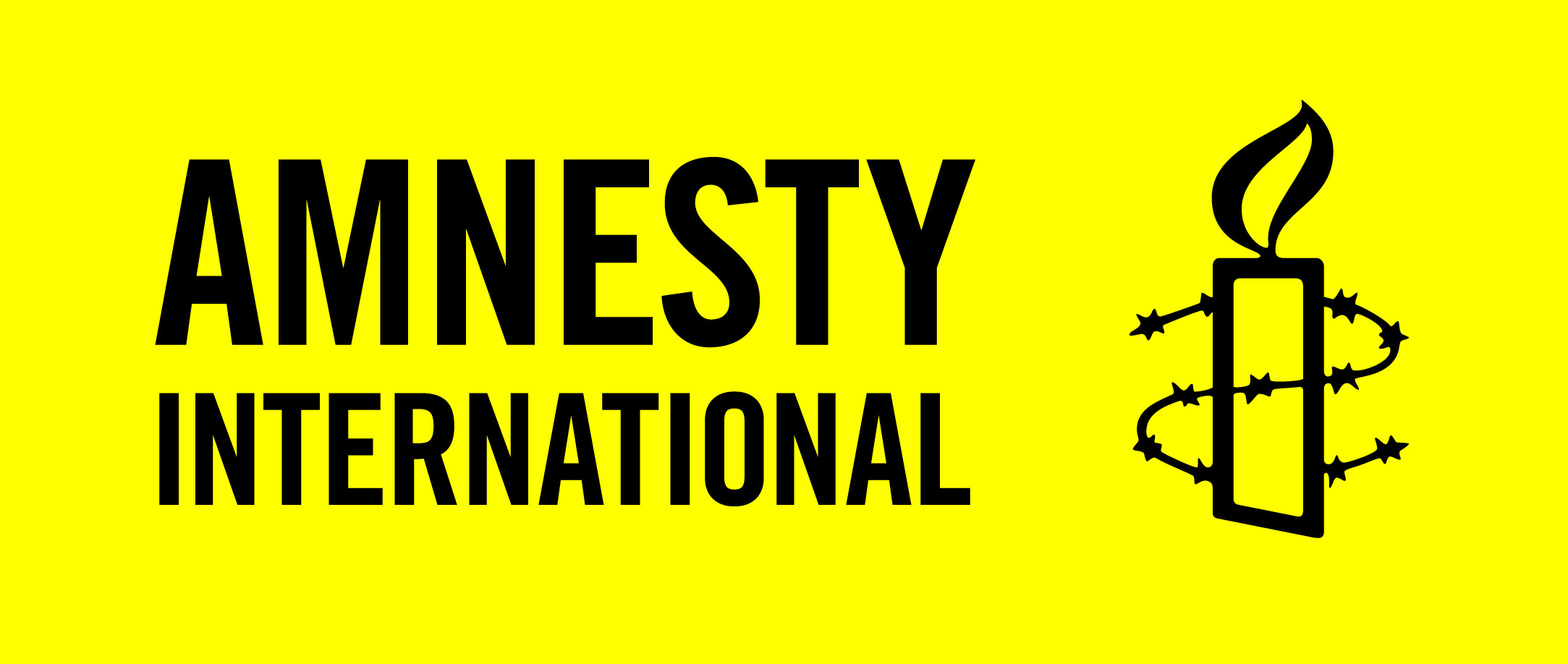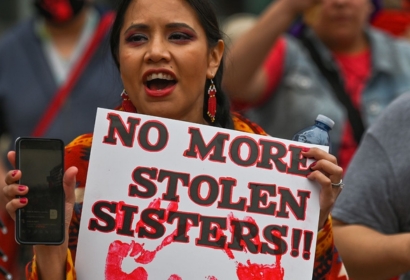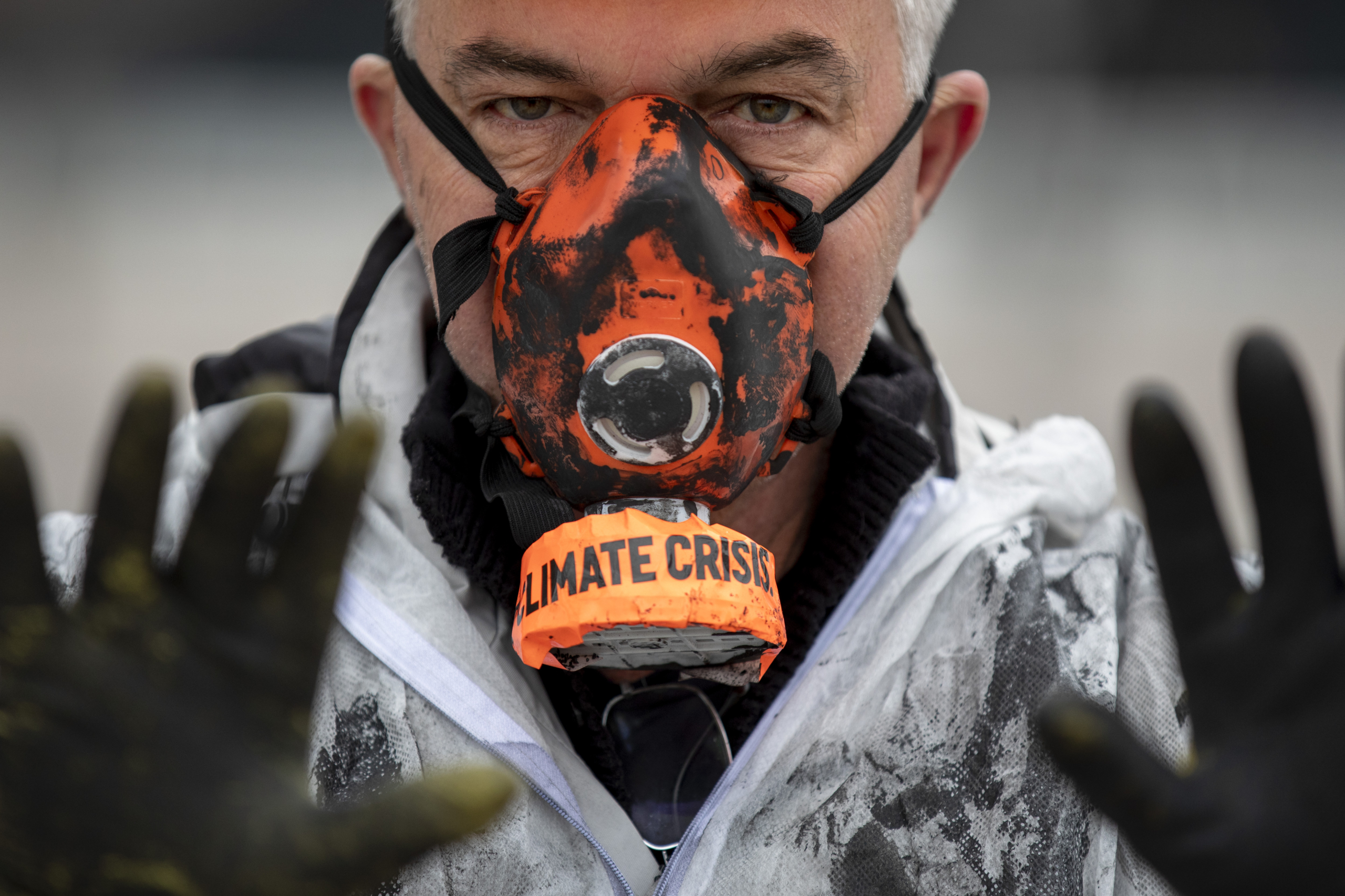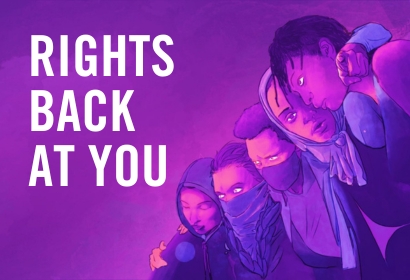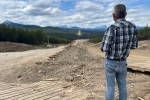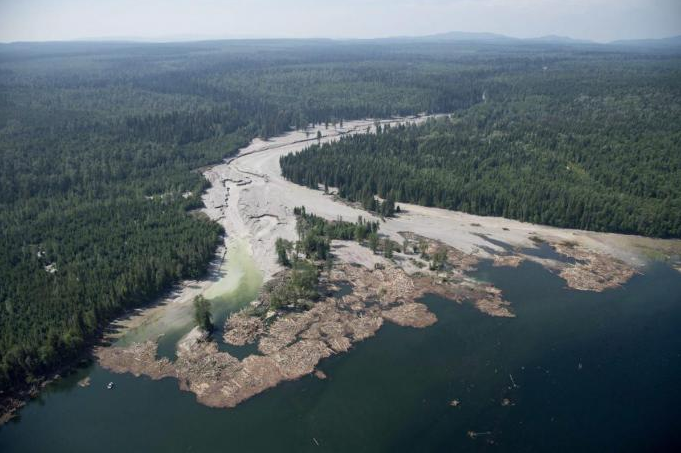Today an international group of 142 scientists, community groups and NGOs from 24 countries published a set of 16 guidelines for the safer storage of mine waste. The guidelines aim to protect communities, workers and the environment from the risks posed by thousands of mine waste storage facilities, which are failing more frequently and with more severe outcomes.
Safety First: Guidelines for Responsible Mine Tailings Management states that the ultimate goal of tailings management must be zero harm to people and the environment and zero tolerance for human fatalities. Last year’s tragic dam collapse in Brazil killed 270 people and destroyed the town of Brumadinho, and came on the heels of tailings dam failures at the Mount Polley mine in Canada and the Samarco mine in Brazil, among others. Across the world, communities in the shadow of large tailings dams live in a state of perpetual fear.
The guidelines come as the Global Tailings Review, co-convened by the international mining industry association, ICMM, investors and the UN Environment Programme, prepares to unveil the first Global Tailings Standard “for the safer management of tailings storage facilities.”
Current industry standards, including the draft of the Global Tailings Standard released in 2019, do not adequately protect communities and ecosystems from failures. The trend in tailings dam tragedies are a consequence of allowing mining companies to sacrifice safety to cut costs, control auditors and silence dissent among workers.
Additional report highlights:
- Tailings storage facilities must be built and managed only with community consent, respecting human rights and the rights of Indigenous Peoples, adopting the best available technologies and practices.
- International safety protocols must be independent of company control, and must be established through multi-stakeholder processes that actively engage workers, communities and civil society.
- Strong standards for tailings dams must ensure financial guarantees and accountability at the highest level of corporate governance. Public participation in decisions and reliable whistleblower and grievance mechanisms are necessary to ensure that communities and workers can raise the alarm without consequences.
- To avoid the long-term liability of mine waste sites and their social and environmental impacts, overall demand for primary raw minerals must be reduced.
The group publishing the report includes frontline organizations in mining affected communities from Brazil, Tanzania, Papua New Guinea, India and elsewhere as well as global groups such as Amnesty International Canada, Earthworks, IndustriALL Global Union Federation, MiningWatch Canada, the Natural Resources Defense Council, The Movement of People Affected by Dams (MAB) and the Sierra Club.
The full report can be found here (including the executive summary). A summary table of the guidelines can be found here, infographics here and here. The Spanish language version is here. Photos and additional spokespeople available upon request.
Community groups and civil society organizations from around the world highlight the importance of “Safety First: Guidelines for Responsible Mine Tailings Management”:
“We need independent guidelines on tailings safety because we cannot trust the information that comes from mining companies and their contractors. In Minas Gerais, we have hundreds of at-risk dams which are the result of the historic irresponsible conduct of mining companies. We urgently need guidelines and regulations to manage toxic mine waste dams. We hope that the case of Brumadinho becomes a milestone and an inflection point for mining across the world.” Carolina de Moura of Associação Comunitária da Jangada, Brumadinho, Brazil
“We’ve seen the disasters of Mount Polley Mine and other failures worldwide–now at an average of over 22 every decade-grossly impacting Indigenous communities, neighboring communities and the land and watersheds they protect. The free, prior and informed consent of local communities is essential to improving the safety of mine tailings storage.” Loretta Williams of First Nations Women Advocating Responsible Mining, Canada
“In both Alaska and Canada, laws regulating mining have long been outdated. We need responsible and safe mining–safe not just for mine employees but for the rest of us who live nearby or downstream. We need clean water for future generations.” Frederick Olsen, Jr, of the Southeast Alaska Indigenous Transboundary Commission, US
“Governments and international institutions need to move urgently to implement these 16 guidelines to end mine waste failures worldwide. Industry self-regulation will not provide adequate protection. There must be a strong global response to this global problem, putting safety first, not profits.” Ugo Lapointe, MiningWatch Canada, Canada
“For too long the mining industry has been allowed to cut costs at the expense of safety. Implementing these guidelines would improve tailings dam safety, require respect for affected communities–including the right to say no to tailings dams–and hold mining companies legally and financially accountable for their actions. Any regulations that do not meet the bar set by these guidelines do not go far enough to protect people, ecosystems and livelihoods from catastrophic failures.” Jan Morrill, Earthworks, US
“By cutting corners on tailings dam design and construction, companies gamble with people’s lives. Respect for human rights and the environment is a responsibility that must be held in the highest regard and factored into all decisions related to tailings dam safety. ‘Human rights above profit’ must become the industry’s new mantra.” Tara Scurr, Amnesty International Canada
“Mining activities in the Amazon have always been touted as “development” but this rhetoric hides the numerous negative impacts felt by territories and communities. A list of 47 at-risk dams from the National Mining Agency included seven dams in the Amazon states of Pará, Mato Grosso, and Amapa. Mining threatens people, animals, and environmental contamination in the Amazon like we saw in Brumadinho and Mariana in Minas Gerais.” Larissa Santos, Justiça Nos Trilhos, Pará, Brazil
“As stewards of our lands and waters, we carry a sacred responsibility to the health of future generations of all life. It is critical that mining standards are updated to prevent further harm. “ Gapaygw’m Ganauu. (Pansy Wright-Simms), Wilp Luutkudziiwus Nation, Canada
“Protecting water and communities needs to become the primary consideration for deciding if a mine is permitted and how toxic mine waste will be managed. “ Gretchen Fitzgerald, Sierra Club Canada Foundation, Canada
“The San Finx tailings dams illustrate how abandoned facilities continue to threaten lives and livelihoods decades after operations end. Over time, the dams have been simply ignored, threatening thousands of mussel-gatherer families in the Noia estuary downstream.” Joám Evans Pim, Fundação Montescola, Galiza, Spain
“Mining and its associated activities, whose practices are based on colonial era laws and policies, pose an unacceptable risk to the health, safety, and livelihoods of First Nations throughout British Columbia…By unanimous resolution, the UBCIC Chiefs’ Council fully opposes mining and its associated activities in the headwaters of sacred river systems, and near any aquifers, salmon-bearing streams, or river-ways of cultural and environmental significance.” Grand Chief Stewart Phillip, President of the Union of BC Indian Chiefs, Canada
“South African mining bosses keep the administration of tailing dams a secret and lack transparency. They are not accountable to people impacted by their projects.” Hassen Lorgat, Bench Marks Foundation, South Africa
“These guidelines will help communities understand how to achieve better than ‘best practice’ and hopefully encourage the global mining industry and governments, by adopting these guidelines, to improve the sustainability performance of mines and mining companies around the world.” Gavin Mudd, Mineral Policy Institute, Australia
“The Mount Polley tailings disaster highlighted the risks these waste dams pose to communities and watersheds in British Columbia. The mining industry can and must do better with their waste and water to reduce risks to the environment and our communities.“ Nikki Skuce, Northern Confluence Initiative, Canada
“Mine wastes and the pollution that results are often an inter-generational problem. In the Great Basin of the United States there are many mines sites that will require active management for hundreds of years. We need to take responsibility now and not pass on a toxic legacy to our future generations.” John Hadder, Great Basin Resource Watch, USA
“The 1971 dam failure at the Certej Gold Mine in Romania led to the death of 89 people. Now, Eldorado Gold plans to restart the Certej mining project. It would lead to deforestation, two open pits, two huge waste dumps and the use of cyanide to mine the gold. The new tailings dams would threaten human lives and the environment.” Roxana Pencea Bradatan, Mining Watch Romania, Romania
“Mining disasters affect us all, but they disproportionately affect Indigenous communities where mining operations are often located. To allow unsafe mining operations in or near Indigenous communities is a clear instance of environmental racism which we should act swiftly to eradicate.” Ana Simeon, RAVEN (Respecting Aboriginal Values and Environmental Needs), Canada
“We live with the legacy of an abandoned lead and zinc mining site full of waste which has released acid mine drainage into our water since 1979 and is unchecked by the EPA. For the 10 tribes located in this watershed, where is the justice?” Earl L. Hatley, LEAD Agency, Inc., USA
“No mine waste in our oceans.” Jonathan Mesulam, West Coast Development Foundation, Papua New Guinea
“The upstream dam construction design is an inherently risky design and poses an unacceptable risk to the health and safety of communities downstream from these structures.” Al Gedicks, Wisconsin Resources Protection Council
“The risks of containment failure with any large-scale mine are catastrophic, so safety first needs to be the guiding principle for mine siting, design, and construction. All of this is being ignored today in the context of the reckless Pebble Mine, abandoned by the legitimate mining industry but still being pursued by an underfunded Canadian company that has elevated profits over the public interest. This has to stop.” Joel Reynolds, Natural Resources Defense Council, USA
“People and communities affected by mining are entitled to full reparation for the damage suffered, including damage to ways of life and life plans. The reparation will only be complete when it guarantees the right to restitution, indemnity, compensation, satisfaction and non-repetition.” – Tatiana Ribeiro de Souza, Grupo de Estudos e Pesquisas Socioambientais (GEPSA), Brazil
“Mining cannot continue to be a one-sided business regarding the distribution of wealth in one hand, and of social and environmental malaises in the other hand.” Marcos A. Pedlowski, PhD in Environmental and Design and Planning, Universidade Estadual do Norte Fluminense, Brazil
“The Mt. Polley disaster is too much, and dams under construction in British Columbia are time bombs that will affect my children & grandchildren. More recycling, less consumption, and more justice in mineral extraction.” Stan Tomandl, The Friends of the Stikine Society, Canada
“While British Columbia touts itself as having some of the safest mine tailings standards in the world, it obviously doesn’t. It falls well short of these 16 guidelines for best practices. This tells us how far we are from truly ensuring safe mine waste storage in Canada and worldwide.” BC Mining Law Reform Network, Canada
“Globally we confront repeats of community megadeaths from tailings dam failures. These guidelines address the technical failures that make mines a death threat and we pray that corporations and regulators will apply them now.” Richard Kamp and Ricardo Segovia, E-Tech International
“Safety of tailing management is related to the volume of production. Mining activities should be much smaller therefore tailings can be managed and mining activities do not create massive environmental damage.“ Pius Ginting, Aksi Ekologi & Emansipasi Rakyat (AEER), Indonesia
‘While mining provides essential minerals for our societies and our energetic transition, we must ensure that these extractive activities are reduced to exploit only what is necessary and embrace a zero waste and circular economy approach. Mine tailings are a huge health and environmental hazard and leave a costly legacy to future generations. Let’s adopt the most stringent standards to maximize the efficiency and safety of the management.” Louise Hénault-ethier, David Suzuki Foundation, Canada
“The upstream dam construction design is an inherently risky design and poses an unacceptable risk to the health and safety of communities downstream from these structures.” Al Gedicks, Wisconsin Resources Protection Council, United States
“With recent dam failures in Michigan, the potential for a planned tailings dam on the Menominee River is a recipe for disaster that will affect municipal water supplies and the Great Lakes watershed.” Dale Burie, President of Coalition to SAVE the Menominee River, United States
“After witnessing disasters at mines like Mount Polley, community members downstream of existing and proposed tailings impoundments are kept awake at night by the what-ifs. What if the impoundment fails because the company is using an unsafe design? What if the impoundment can’t stand up to an earthquake? What if there are a series of unprecedented storm events due to climate change that liquefy the tailings? Regulators must ensure that facilities are sited only where appropriate to prevent disasters, and mining companies should be forced to use Best Available Technology with the highest safety standards possible to help prevent what-if scenarios from ever happening.” Mary Costello, Rock Creek Alliance, United States
“Indigenous peoples’ lands throughout the world are disproportionately affected by mining. The storage of mine waste and the construction of tailings dams is a matter of vital concern for them, as poor practices in these areas have had devastating impacts on their well-being. Respect for indigenous peoples’ territorial, self-governance and cultural rights is essential in decisions-making around storage of mine waste and tailing dam construction. This implies that their free prior and informed consent (FPIC) must be obtained in accordance with international human rights law standards and indigenous peoples own customs and decision-making processes.” Cathal Doyle, Lecturer and researcher in International Human Rights Law, Business & Human Rights, Indigenous Peoples and Minority Rights, Middlesex University, U.K.
“Open pit mining is a violence against nature and humanity. When will we realize that the cost is too high?” Barbara Silburt, Halifax Chapter of the Council of Canadians
“The dumping of tailings in oceans or other bodies of water should never be allowed. Norway is one of five countries allowing dumping in marine waters, and today tailings are being dumped in five Norwegian fjords. The government has even issued permits for three more. Friends of the Earth Norway works together with other Norwegian and international organizations to stop this dumping. Our main answers to the question of what to do with the tailings, are to find alternative uses (circular economy) and backfilling.” Mads Løkeland-Stai, Naturvernforbundet – Friends of the Earth Norway
“Being a neighbourhood that was potentially downstream from a large mine, these issues are of grave concern to us. After our experience, we feel that every effort should be taken to ensure proper safeguards are in place as mandatory policy instead of being addressed on a one-off basis.” Randy Sunderman, Aberdeen Neighbourhood Association, BC, Canada
“One of the risks of the proposed Ajax Mine (now rejected by BC and Canada) was the risk that the huge tailings that would sit above the city of Kamloops would collapse from unstable glacial till and the waste would end up running through the middle of Kamloops along Peterson Creek. The existing tailing and pit water from the old Afton mine still present a risk to drinking water for people who live along the creek.” Paula Pick, Kamloops Area Preservation Association (KAPA), Canada
“ If it had been built, the KGHM Ajax mine waste facility would have been twice the size of the Mount Polley site that failed in 2014, upwind and upstream of a population of approximately 90,000 people, and within 2km of homes and schools in the nearest neighbourhood. A failure of this size from a site perched at a higher elevation above a valley community could bring catastrophic outcomes. It is time to change laws and require standards that ban mine waste sites above inhabited areas” Gina Morris, Kamloops Moms for Clean Air, Canada
“Teck Resources’ Elk Valley coal mines are the poster child of BC’s poor mining policy, polluting local waters, killing fish, contaminating local civic water wells and that then cross the international border into Montana, exceeding US standards for selenium. Despite BC’s archaic mining laws, the province continues to approve new mines and expansion with no long term solution to Teck’s water pollution of international waters, while refusing to agree to the engagement of the International Joint Commission.” Dave Hadder, Headwaters Montana, United States
“Contamination is not always visible to the naked eye. In Madagascar the Rio Tinto QMM ilmenite mine is discharging its wastewater into local lakes and rivers which now demonstrate elevated levels of uranium and lead, well above WHO safe drinking water guidelines, and directly linked to the extraction process… The management of the mine wastewater through a series of mine tailings ponds, and the mine’s required dam facility (which has been downgraded to ‘excavated storage facility’) have yet to be proven to be adequate to protect the environment and local people, having been subject to two overflow incidents in the last two years during heavy rainfall. Much stricter international controls and standards are required to tackle this problem especially where in-country capacity is low and transparency and governance is weak.” Yvonne Orengo, The Andrew Lees Trust, U.K.
“Mining produces waste. Providing safeguards to ensure that 100% of that waste remains safely and permanently situated in a controlled environment is the only way in which we can justifiably extract resources required by modern society.” Fred Coriell, Save the South Fork Salmon, Idaho, United States
“Mine waste represents a significant risk to the environment and to the communities, especially in fragile regions. Given that the mining waste remains at its location for centuries, it is imperative to manage the waste properly to avoid damage to the surrounding environment and waters. Unless the waste management program is technically viable and is supported by significant capital, the mining project should not be authorized.” Dmitri Kharitidi, Coalition des Opposants à un Projet minier en Haute-Matawinie (COPH), Canada
“Slam (mining residues) will be the only legacy that mining will bequeath to future generations of Abitibi in exchange for the plunder of our mineral resources.” Henri Jacob, Action Boréale, Canada
“The current abdication of environmental regulations has created a terrible opportunity for the company and government collaborators to ‘develop’ properties in an extremely vulnerable zone at the toe of the dam, that happens also to be the epicenter of recorded seismic activity, to be populated by low-income laborers and apartment-dwellers.” Ivan G Weber, Weber Sustainability Consulting, United States
“We are very concerned about the tailings dams being constructed in Ecuador, particularly the Tundayme dam for the Mirador mine. This dam is slated to be the tallest tailings dam in the world at 260 meters high (three times higher than any other existing dam), with much steeper slopes than usual, thus creating a greater danger of collapse. The dam is in the valley of the Tundayme River, part of the upper Amazon Basin, with thousands of people living downstream. Despite the mine being in an area of high rainfall and high earthquake risk, EcuaCorriente has no plans for any potential tailings dam collapse. Additionally the kind of dams being constructed in Ecuador are constructed in a series of sequential lifts over a number of years. These sequential lifts are known to cause a higher risk of dam collapse, and most developed countries like Australia do not recommend their use. Despite this, Australian companies like Newcrest are constructing these mines in Ecuador and other places.“ Rebekah Hayden, Rainforest Action Group, Ecuador
“They may be far from public sight, but we have witnessed 10 significant mine waste failures in our province alone since 2008. Some of these failures have damaged waterways and fish habitat for many kilometres downstream. There’s no acceptable reason for this. Governments must act – now, not later – to end mine waste failures.” Coalition Québec Meilleure Mine, Canada
“Regulatory capture is operative globally. Governments have ceased to defend workers, communities and the environment. Most important task is to keep a light shining on the mining companies, and their uses/abuses of their power. Most important strategy is to find trusted, critical voices about mining and expand them.” Judith Marshall, Associate CERLAC York University
